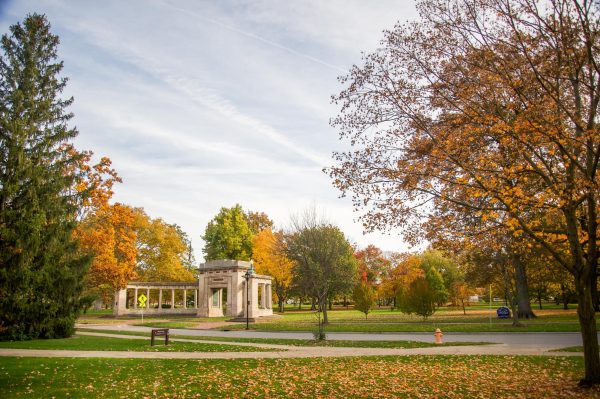Steps Toward Liberation: A Reflection on Conservatory Missteps
“The paradox of education is precisely this, that as one begins to become conscious one begins to examine the society in which [they are] being educated.” — James Baldwin
The Conservatory’s final Black History Month event presented four white men and one white woman to perform works by William Grant Still, Jeffrey Mumford, and Chevalier de Saint-Georges. To say that I am disappointed wouldn’t accurately convey the regularity with which Black faces are pushed aside.
The event, coupled with its presentation on the Conservatory’s social media flier, represents a blatant disregard for inclusion. Looking below the surface, this moment represents how whiteness allows the Conservatory to host an event such as “Symposium: Decentering the Canon in the Conservatory” on Feb. 6, pat itself on the back for having yet another conversation without action, then resume its historic participation in whiteness as a force of oppression 22 days later.
White Supremacy is built on both the objectification of Black bodies and the stolen ownership of the creations of Afrikan descendants. The Conservatory participated in the former, and in so doing made a positive investment in their possession of whiteness. To invest in the ownership of whiteness is to invest in the ability to ignore not only Black people, but the interdependence of Afrikan descendants and their creations. The Conservatory is guilty of the former in the second degree. The apparent lack of planning for a Black History Month event to have not a single performer of Afrikan descent is flagrant — a symptom of willful ignorance for an “internationally renowned” Conservatory.
It is undeniable that we live in a republic for which it is advantageous to maintain a proximity to whiteness. Lighter and whiter skin is often portrayed as the standard of beauty, the standard for hiring, and, in this case, the standard for performing in a conservatory. But whiteness is only a single, yet multifaceted, elevator for some and barrier for others.
The Conservatory box has always maintained a restrictive canon and race-based bias. Opening these spaces in such a way for Black life and Black canons to be well-represented and practiced is a beautiful step not to be minimized or downplayed. But it is the emphasis on that same first step toward inclusion that allows space for lazy attempts towards liberation.
Liberation is a product of imagination, and a lackadaisical imagination is incapable of manifesting liberation. Indigenous, nonbinary, Asian, trans, Latinx, and queer folks are often ignored in the Black-white binary that has been bolstered for decades. By not centering the most vulnerable folks, trans women of culture, there is a perpetual subversion of liberation by limiting our vision of what “inclusion” or “diversity” could manifest as.
Right now there are crumbs on the table. For an entire community to be fed adequately, the request must be higher. We as a student body must raise the asking price of our presence. We shouldn’t have to worry about the halfhearted planning and execution of the final segment to “A Celebration of Black Artistry.” The fires of liberation should be so hot under the bottoms of our leaders that this would never happen. We should, however, be at such a point to question why an opportunity hasn’t been given to a Black trans woman to perform.




